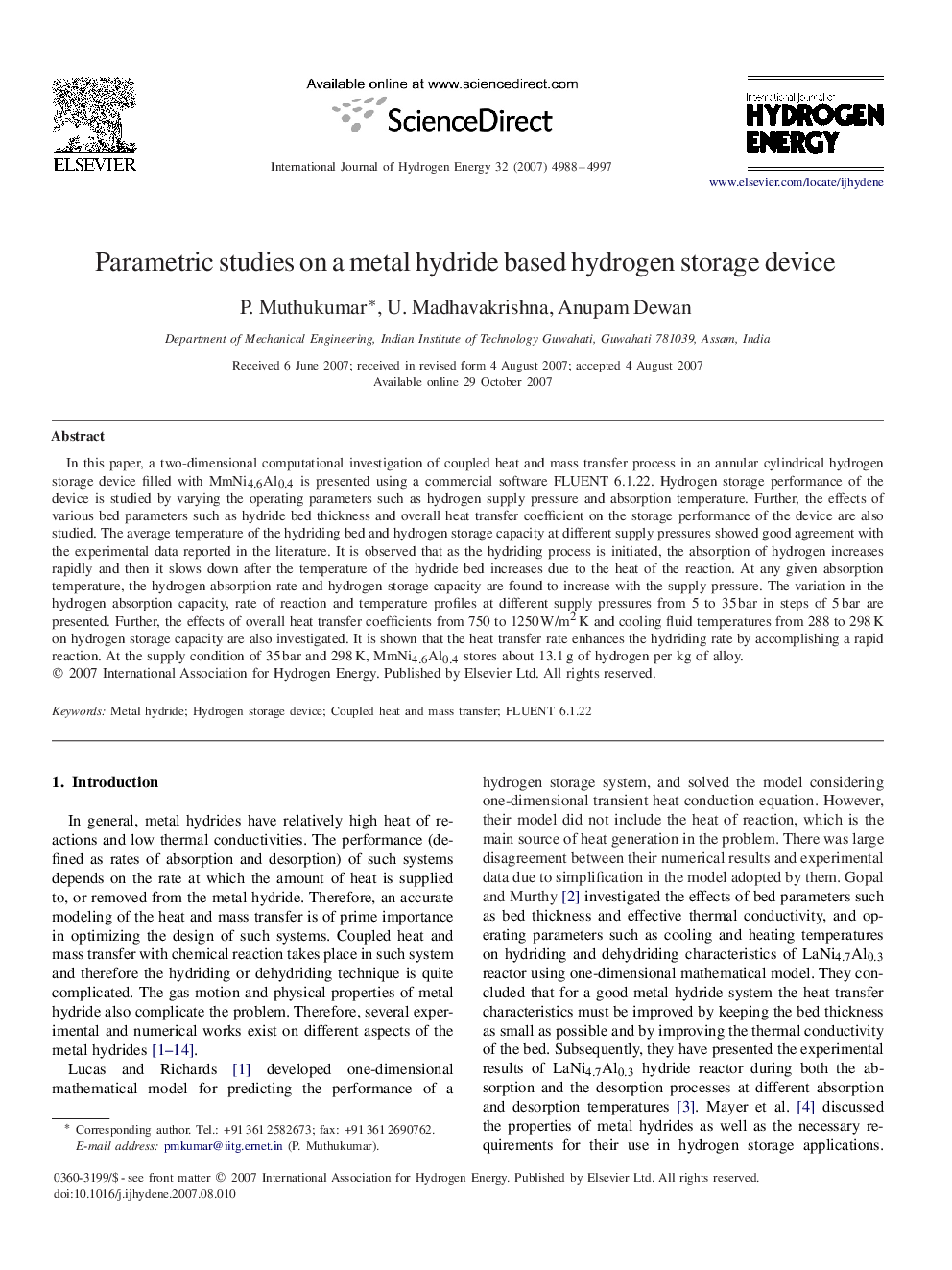| Article ID | Journal | Published Year | Pages | File Type |
|---|---|---|---|---|
| 1283793 | International Journal of Hydrogen Energy | 2007 | 10 Pages |
In this paper, a two-dimensional computational investigation of coupled heat and mass transfer process in an annular cylindrical hydrogen storage device filled with MmNi4.6Al0.4MmNi4.6Al0.4 is presented using a commercial software FLUENT 6.1.22. Hydrogen storage performance of the device is studied by varying the operating parameters such as hydrogen supply pressure and absorption temperature. Further, the effects of various bed parameters such as hydride bed thickness and overall heat transfer coefficient on the storage performance of the device are also studied. The average temperature of the hydriding bed and hydrogen storage capacity at different supply pressures showed good agreement with the experimental data reported in the literature. It is observed that as the hydriding process is initiated, the absorption of hydrogen increases rapidly and then it slows down after the temperature of the hydride bed increases due to the heat of the reaction. At any given absorption temperature, the hydrogen absorption rate and hydrogen storage capacity are found to increase with the supply pressure. The variation in the hydrogen absorption capacity, rate of reaction and temperature profiles at different supply pressures from 5 to 35 bar in steps of 5 bar are presented. Further, the effects of overall heat transfer coefficients from 750 to 1250 W/m2 K and cooling fluid temperatures from 288 to 298 K on hydrogen storage capacity are also investigated. It is shown that the heat transfer rate enhances the hydriding rate by accomplishing a rapid reaction. At the supply condition of 35 bar and 298 K, MmNi4.6Al0.4MmNi4.6Al0.4 stores about 13.1 g of hydrogen per kg of alloy.
